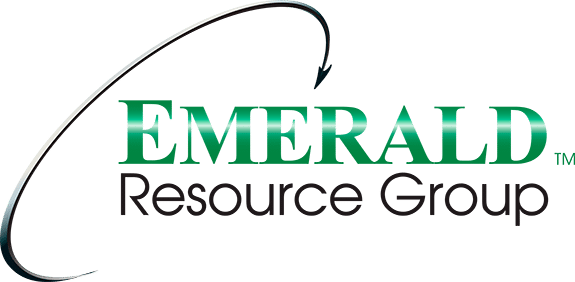Introduction:
In today’s dynamic business landscape, organizations are confronted with the challenge of balancing legacy infrastructure with the agility and scalability offered by cloud technologies. Hybrid IT environments emerge as a strategic solution, offering a blend of on-premises infrastructure and cloud services. In this analytical exploration, we dissect the intricacies of hybrid IT, uncovering its nuanced benefits, formidable challenges, and the strategic considerations for organizations navigating this complex terrain.
Defining Hybrid IT Environments:
Hybrid IT epitomizes the convergence of traditional on-premises infrastructure with the elastic capabilities of public and private clouds. This amalgamation seeks to harness the benefits of both paradigms, providing organizations with unparalleled flexibility, scalability, and resilience. Yet, beneath this seemingly harmonious integration lie layers of complexity and considerations that demand meticulous analysis and strategic planning.
Analyzing the Benefits:
- Flexibility and Scalability: Hybrid IT environments empower organizations to dynamically scale resources in response to fluctuating demands, striking a delicate balance between resource availability and cost-effectiveness.
- Cost Optimization: The allure of hybrid IT lies in its promise of cost optimization, enabling organizations to rationalize infrastructure expenditure by aligning it with actual usage patterns and business needs.
- Agility and Innovation: The analytical lens reveals hybrid IT as a catalyst for innovation, fostering agility and accelerating the pace of digital transformation by leveraging cloud-native capabilities alongside legacy systems.
- Data Resilience and Redundancy: An analytical examination unveils the robustness of hybrid IT in ensuring data resilience and redundancy, mitigating risks through distributed data storage and redundancy across disparate environments.
Unpacking the Components:
- On-Premises Infrastructure: A critical component in the hybrid IT ecosystem, on-premises infrastructure forms the backbone, anchoring core business operations and applications.
- Private Cloud: Delving deeper, private cloud infrastructure emerges as a bastion of control and security, offering organizations the ability to host sensitive workloads while retaining granular control.
- Public Cloud: The analytical scrutiny reveals the inherent scalability and flexibility of public cloud services, serving as an indispensable resource for augmenting capacity and supporting dynamic workloads.
- Hybrid Cloud Management Platforms: Analyzing the role of management platforms unveils their pivotal function in orchestrating and optimizing hybrid IT resources, offering centralized control and governance across diverse environments.
Evaluating the Challenges:
- Complexity: An analytical lens reveals the intricate web of complexities inherent in hybrid IT environments, stemming from the integration of disparate technologies, platforms, and management paradigms.
- Security and Compliance: Scrutinizing security and compliance unveils the intricate challenges posed by data protection, identity management, and regulatory adherence in hybrid environments, necessitating robust strategies and frameworks.
- Integration and Interoperability: Analyzing integration challenges elucidates the complexities of harmonizing legacy systems with cloud services, navigating compatibility issues, and fostering seamless data flow across environments.
- Cost Management: The analytical examination unveils the nuanced nuances of cost management in hybrid IT, highlighting the need for meticulous monitoring, optimization, and governance to mitigate risks of overspending and unpredictability.
Strategic Considerations and Best Practices:
- Strategic Planning: An analytical approach underscores the importance of strategic planning in shaping hybrid IT initiatives, necessitating clear objectives, robust governance, and alignment with business goals.
- Automation and Orchestration: Analyzing automation and orchestration reveals their transformative potential in streamlining operations, minimizing manual intervention, and enhancing efficiency across hybrid environments.
- Security and Compliance: Through analytical scrutiny, the imperative of robust security and compliance measures emerges, emphasizing the need for encryption, access controls, and continuous monitoring to safeguard sensitive data and ensure regulatory adherence.
- Collaboration and Communication: An analytical lens underscores the critical role of collaboration and communication in hybrid IT, advocating for cross-functional collaboration, transparency, and knowledge sharing to foster alignment and accountability.
- Performance Monitoring and Optimization: Analyzing performance monitoring and optimization unveils their indispensable role in maintaining operational excellence, identifying bottlenecks, and optimizing resource utilization to drive efficiency and cost savings.
Conclusion:
In conclusion, the analytical exploration of hybrid IT environments reveals a landscape fraught with complexities, challenges, and strategic considerations. By leveraging an analytical mindset, organizations can unravel the intricacies of hybrid IT, unlocking its transformative potential to drive innovation, agility, and competitiveness. Through meticulous planning, strategic investments, and a commitment to continuous improvement, organizations can navigate the labyrinth of hybrid IT with confidence, harnessing its power to propel them towards digital excellence in the modern era.

Are you interested in exploring other career opportunities? Contact us today!
